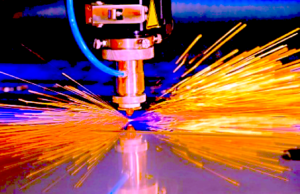Among its final acts, the 113th Congress has finalized the appropriations for the remainder of fiscal year 2015. CRomnibus, the Consolidated and Further Continuing Appropriations Act, 2015 (H.R. 83). will fund most of the federal government through September 30, 2015. While media attention has focused on a handful of controversial provisions, the bill includes bipartisan support for manufacturing infrastructure.
Earlier this fall, the U.S. House of Representatives unanimously passed the Revitalize American Manufacturing and Innovation Act (H.R. 2996) to authorize a national network of manufacturing hubs, or National Network of Manufacturing Innovation (NNMI). This network was first proposed by the Administration in 2012. The CRomnibus incorporates RAMI in its entirety, thus providing legal authority for the new program. It does not, however, appropriate any new funds for the institutes.
Even in the absence of appropriated funds, the legislation underscores bipartisan consensus on the critical role that supporting infrastructure plays in fostering manufacturing innovation, particularly for small- and medium-sized companies. These companies often do not have access to the highly specialized instrumentation required to develop the next-generation products critical to securing and maintaining competitive advantage.
In most technology-intensive industries, one of the greatest challenges to continued innovation lies in the capabilities of the supply chain. Suppliers are often smaller companies with limited access to the state of the art tooling and expertise at the leading edge of innovation. The manufacturing institutes will assemble these resources in a shared environment to enable manufacturers to test new materials, conduct failure analysis, and validate new techniques.
Passage of this authorizing legislation underscores consensus that manufacturing at the leading edge of innovation requires a sophisticated infrastructure. Providing for the establishment of this infrastructure is an appropriate government function, insofar as it enables competition. The vision for the manufacturing institutes is that they will operate as industrial consortia, achieving financial self-sufficiency after five years.
To date, the Administration has utilized existing funds to establish four manufacturing institutes, focusing on additive manufacturing, lightweight metals, digital manufacturing and power electronics. Three more institutes are contemplated, addressing challenges in integrated photonics, flexible hybrid electronics, and smart manufacturing. See related article
TechVision21 applauds the passage of RAMI, but appropriations will be necessary to realize the vision that it contemplates. These measures do not involve “picking winners” but rather provide an infrastructure that is as integral as roads and bridges to facilitating commerce.

